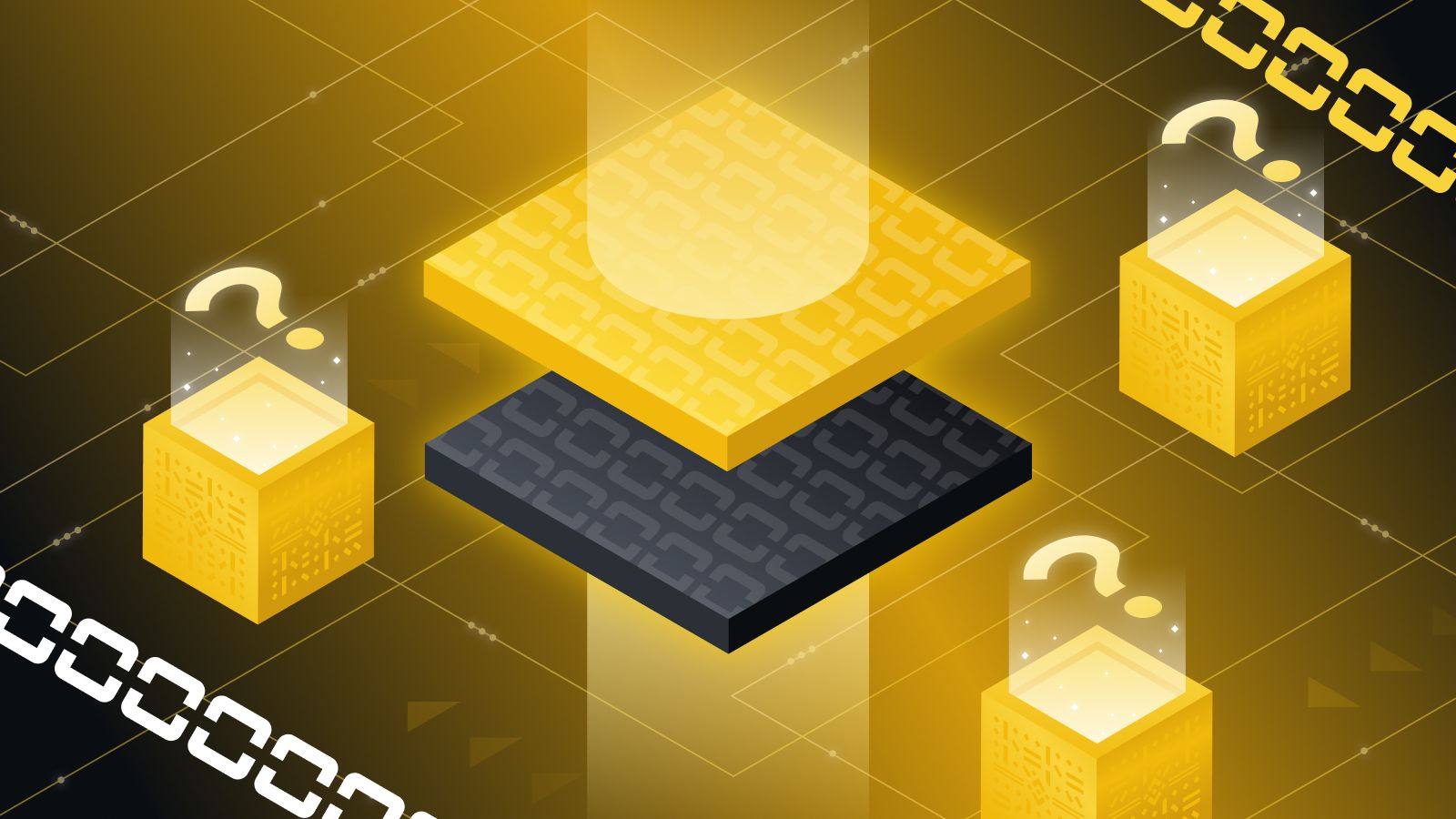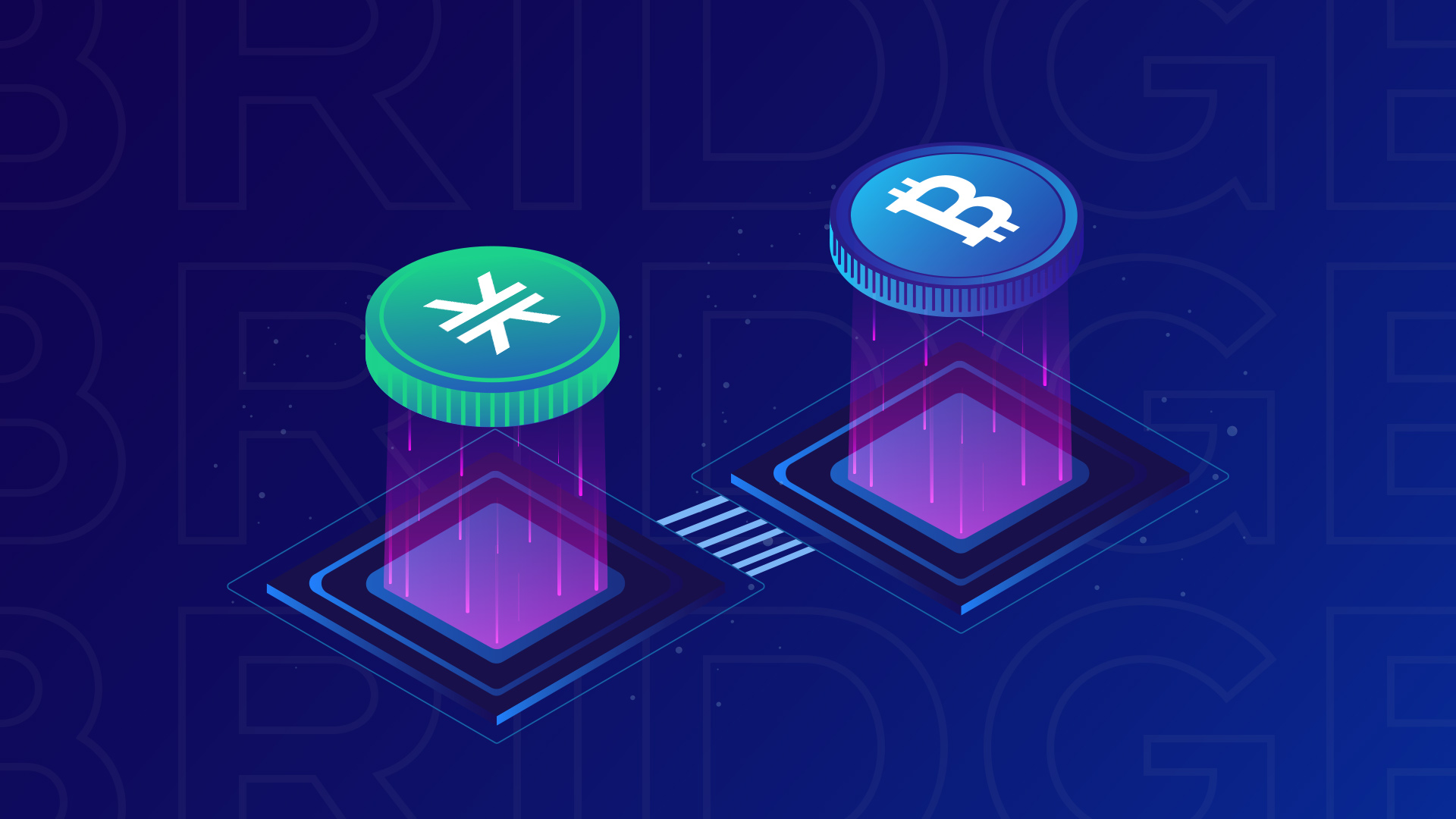Introduction
Welcome to the world of blockchain protocols! In today’s digital era, the concept of blockchain has emerged as a revolutionary technology that is transforming various industries. From finance to supply chain management, blockchain protocols have the potential to reshape the way we conduct transactions and share information. But what exactly is a blockchain protocol?
At its core, a blockchain protocol is a set of rules and algorithms that govern the behavior of a blockchain network. It provides a framework for participants to interact with each other and maintain consensus, ensuring the integrity and security of the system. In simpler terms, it serves as the backbone of a blockchain network, enabling the decentralized and transparent nature of the technology.
Blockchain protocols operate on the principle of distributed ledger technology, where transactions are recorded and verified across a network of computers, known as nodes. Unlike traditional centralized systems, blockchain protocols eliminate the need for intermediaries, such as banks or governments, by allowing participants to directly transact with one another.
The beauty of blockchain protocols lies in their ability to ensure trust and immutability in a decentralized environment. By utilizing cryptographic algorithms, every transaction recorded on the blockchain is secured and cannot be tampered with. This transparency and immutability make blockchain protocols highly desirable for applications that require traceability and authenticity.
While blockchain protocols were initially popularized by cryptocurrencies like Bitcoin and Ethereum, their potential extends far beyond digital currencies. These protocols can be customized and implemented for a wide range of purposes, including but not limited to supply chain management, healthcare records, voting systems, and identity verification.
This article will delve deeper into the workings of blockchain protocols, exploring the different types available, their key features, as well as the advantages and disadvantages they bring. We will also discuss popular examples of blockchain protocols and provide insights into how to choose the right one for your specific needs.
So, let’s embark on this fascinating journey into the world of blockchain protocols and discover how this innovative technology is revolutionizing the way we interact, transact, and trust in the digital age.
What is a Blockchain Protocol?
A blockchain protocol is a set of rules and algorithms that govern the operations and behaviors of a blockchain network. It acts as the backbone of the network, ensuring the integrity, security, and consensus among participants. The protocol defines the structure of the blockchain, including how transactions are verified, recorded, and added to the ledger.
At its core, a blockchain is a decentralized and distributed ledger that records and verifies transactions across a network of computers, known as nodes. Unlike traditional centralized systems, where a single entity controls the ledger, blockchain protocols allow multiple participants to maintain the ledger collectively. This decentralized nature eliminates the need for intermediaries, making transactions more efficient, transparent, and secure.
When a transaction is initiated on a blockchain network, it undergoes a series of steps to ensure its validity and inclusion in the blockchain. These steps vary depending on the specific blockchain protocol being used, but they typically involve the following key components:
- Consensus Mechanism: A blockchain protocol defines the consensus mechanism used to agree upon the state of the blockchain. Popular consensus mechanisms include Proof of Work (PoW), Proof of Stake (PoS), and Delegated Proof of Stake (DPoS). These mechanisms enable the network participants to reach a consensus on which transactions are valid and should be added to the blockchain.
- Transaction Validation: Once a transaction is submitted to the network, it undergoes validation by the participating nodes. This validation process ensures that the transaction meets the predefined rules and criteria set by the blockchain protocol. These rules may include verifying the digital signatures, checking for sufficient funds, and ensuring that the transaction adheres to any smart contracts.
- Block Formation and Linking: Validated transactions are grouped together into blocks, which are added to the blockchain in a sequential and immutable manner. Each block contains a reference to the previous block, creating a chain of blocks, hence the name “blockchain.” This linking mechanism ensures the integrity of the entire blockchain, as any modification to a single block would require altering all subsequent blocks.
- Consensus Algorithm: Blockchain protocols employ various consensus algorithms to determine the order of transactions and ensure agreement among network participants. These algorithms play a crucial role in preventing double-spending and maintaining the security and consensus of the blockchain.
Overall, a blockchain protocol provides the framework for establishing a trustless and transparent environment. It enables participants to interact directly, without the need for intermediaries, and ensures that transactions are securely recorded and verified on the blockchain. By leveraging cryptographic algorithms and consensus mechanisms, blockchain protocols revolutionize trust and bring about a new era of secure and decentralized transactions.
How Does a Blockchain Protocol Work?
Blockchain protocols operate based on a series of interconnected processes that work in tandem to ensure the integrity and security of the network. Here is a simplified explanation of how a blockchain protocol works:
- Transaction Initiation: The process begins when a participant initiates a transaction on the blockchain network. This transaction can involve the transfer of digital assets, the execution of a smart contract, or any other predefined action supported by the blockchain protocol.
- Transaction Validation: Once a transaction is initiated, it needs to be validated by the network participants. Validators, or nodes, within the network perform this task by checking the validity of the transaction against the predefined rules and criteria set by the blockchain protocol. This includes verifying digital signatures, checking for sufficient funds, and ensuring that the transaction adheres to any smart contracts.
- Consensus Mechanism: After a transaction is validated, the consensus mechanism defined by the blockchain protocol comes into play. This mechanism enables the network participants to reach an agreement on the validity and order of transactions. Common consensus mechanisms include Proof of Work (PoW), Proof of Stake (PoS), and Delegated Proof of Stake (DPoS). These mechanisms prevent fraudulent activities, such as double-spending, and ensure that only valid transactions are added to the blockchain.
- Block Formation and Mining: Validated transactions are grouped together into blocks, which are then added to the blockchain. This process, known as block formation, involves creating a block header that contains information such as the previous block’s reference, a timestamp, and a unique identifier. Miners, or nodes with computational power, compete to solve a complex mathematical puzzle, known as the mining algorithm, to add the new block to the blockchain. The first miner to solve the puzzle earns the right to add the block and is rewarded with newly minted cryptocurrency or transaction fees.
- Blockchain Consistency: As new blocks are added to the blockchain, the network participants ensure the consistency and integrity of the entire chain. Each block contains a reference to the previous block, creating a sequential chain of blocks. If a block is tampered with, it would require modifying all subsequent blocks, which becomes computationally infeasible due to the distribution of the blockchain across multiple nodes.
By incorporating these processes, a blockchain protocol establishes a decentralized and transparent network where transactions are securely recorded and verified. The use of cryptographic algorithms, consensus mechanisms, and mining processes ensures the immutability and integrity of the blockchain. This distributed nature eliminates the need for reliance on a centralized authority and brings about a new level of trust and security in various industries.
Types of Blockchain Protocols
Blockchain technology has given rise to a variety of blockchain protocols, each with its own unique characteristics and use cases. Let’s explore some of the most common types of blockchain protocols:
- Public Blockchain: Public blockchain protocols, such as Bitcoin and Ethereum, are open to anyone who wants to participate in the network. These protocols are characterized by their decentralized nature and transparency, allowing anyone to read, write, and validate transactions. Public blockchains are secured by consensus mechanisms, like Proof of Work (PoW), and are often used for cryptocurrencies and decentralized applications.
- Private Blockchain: Private blockchain protocols are restricted to a specific group of participants or organizations. Unlike public blockchains, these protocols have access controls and require permission to join the network. Private blockchains are commonly used in enterprise settings, enabling secure and efficient collaboration between trusted parties. They often employ consensus mechanisms, such as Proof of Authority (PoA), to maintain network integrity.
- Consortium Blockchain: Consortium blockchain protocols are a hybrid of public and private blockchains. They are governed by a group of organizations or entities that operate the network. Consortium blockchains offer more scalability and privacy compared to public blockchains while leveraging the benefits of decentralized consensus. These protocols are often utilized in industries where multiple organizations need to collaborate and share information in a controlled manner.
- Permissionless Blockchain: Permissionless blockchain protocols, like Bitcoin, allow anyone to join the network, participate in the consensus, and validate transactions. These protocols prioritize decentralization and openness, but they may face scalability challenges due to the high computational requirements of the consensus mechanism.
- Permissioned Blockchain: Permissioned blockchain protocols restrict access to a select group of participants who are granted permission to join the network. These protocols prioritize privacy, efficiency, and scalability, making them suitable for enterprise use cases. Permissioned blockchains often utilize consensus mechanisms that require validators to be pre-approved or meet specific criteria.
- Hybrid Blockchain: Hybrid blockchain protocols combine elements of both public and private blockchains. They allow for a mix of public and private transactions, offering flexibility and customization. Hybrid blockchains are often used in scenarios where some data needs to be publicly accessible while keeping sensitive information private.
These are just a few examples of the various types of blockchain protocols available today. Each type has its own strengths and weaknesses, making it suitable for specific applications and industries. Choosing the right blockchain protocol depends on factors such as security requirements, scalability needs, level of decentralization, and the intended use case.
As the blockchain ecosystem continues to evolve, new protocols and variations are being developed, catering to the diverse needs of different industries. Understanding the different types of blockchain protocols is crucial for organizations and individuals looking to harness the power of blockchain technology and unlock its potential.
Key Features of a Blockchain Protocol
Blockchain protocols offer a range of distinctive features that contribute to their uniqueness and widespread adoption. These features play a crucial role in ensuring the security, transparency, and efficiency of blockchain networks. Let’s explore some of the key features of a blockchain protocol:
- Decentralization: Perhaps the most notable feature of blockchain protocols is decentralization. By distributing the ledger across a network of nodes, blockchain protocols eliminate the need for a central authority or intermediary. This decentralized nature enhances security, eliminates single points of failure, and empowers participants to have control over their transactions and data.
- Transparency: Blockchain protocols promote transparency by providing a public ledger where all transactions are recorded and visible to network participants. This transparency ensures accountability, as anyone can verify the validity and authenticity of transactions. It also reduces the risk of fraud, as the immutable nature of the blockchain leaves a transparent audit trail.
- Immutability: The immutability of blockchain protocols ensures that once a transaction is added to the blockchain, it cannot be altered or tampered with. This feature is achieved through cryptographic algorithms and consensus mechanisms, making the blockchain resistant to fraud and data manipulation.
- Security: Blockchain protocols utilize robust security measures to protect against unauthorized access and malicious activities. The combination of cryptographic hashing, consensus algorithms, and distributed architecture ensures the integrity and confidentiality of transactions and data on the blockchain.
- Smart Contracts: Many blockchain protocols support the execution of smart contracts, which are self-executing agreements with predefined rules and conditions. Smart contracts automate processes, eliminate the need for intermediaries, and enhance efficiency and transparency in various applications, such as supply chain management, financial transactions, and decentralized applications.
- Efficiency: Blockchain protocols aim to optimize the speed and efficiency of transactions compared to traditional systems. While transaction processing speeds vary across different protocols, advancements such as Layer 2 solutions and scalability improvements are being implemented to address scalability challenges and enhance overall network efficiency.
- Privacy: Some blockchain protocols prioritize privacy by employing techniques like encryption and zero-knowledge proofs to protect the confidentiality of transactions and sensitive data. Privacy-focused protocols allow participants to transact securely while withholding certain details from public visibility.
These key features collectively contribute to the appeal and value of blockchain protocols across various industries. They enable secure, transparent, and efficient transactions, foster trust among participants, and unlock new possibilities for decentralized applications and business models.
It’s important to note that the extent and implementation of these features may vary from one blockchain protocol to another. As the technology continues to evolve and mature, developers and researchers are constantly working on improving existing protocols and exploring new solutions to address scalability, privacy, and interoperability challenges.
Advantages and Disadvantages of Blockchain Protocols
Blockchain protocols offer numerous advantages that have propelled their adoption across industries. However, like any technology, they also come with certain limitations. Let’s explore the advantages and disadvantages of blockchain protocols:
Advantages:
- Decentralization and Trust: Blockchain protocols eliminate the need for intermediaries and central authorities, allowing for direct peer-to-peer transactions. This decentralization fosters trust, as participants can verify transactions independently and have control over their own data.
- Transparency and Auditability: The transparent nature of blockchain protocols enables anyone to view and verify transactions recorded on the blockchain. This transparency enhances accountability, reduces fraud, and provides a reliable audit trail.
- Improved Security: Blockchain protocols utilize cryptographic algorithms and consensus mechanisms to ensure the integrity and security of transactions. The distributed nature of the blockchain makes it highly resistant to hacking and malicious activities.
- Efficiency and Cost Reduction: Blockchain protocols streamline and automate processes, reducing the need for intermediaries and manual verification. This improves efficiency, reduces costs, and accelerates transaction settlement compared to traditional systems.
- Smart Contracts: Many blockchain protocols support smart contracts, enabling the execution of automated agreements without the need for intermediaries. Smart contracts enhance efficiency, eliminate the risk of fraud, and enable the creation of decentralized applications.
- Global Accessibility: Blockchain protocols enable global participation, eliminating geographical barriers and allowing for borderless transactions. This makes blockchain technology particularly useful for cross-border payments and remittances.
Disadvantages:
- Scalability: One of the challenges that blockchain protocols face is scalability. As the number of transactions increases, some protocols struggle to process transactions quickly enough to meet growing demand. However, technological advancements and the implementation of Layer 2 solutions are addressing scalability concerns.
- Energy Consumption: Some blockchain protocols, particularly those that use Proof of Work (PoW) consensus mechanisms, require significant computational power and energy consumption. This has raised concerns about the environmental impact of blockchain technology.
- Regulatory Challenges: The decentralized and global nature of blockchain protocols can pose regulatory challenges. Governments and regulatory bodies are still adapting to the technology and establishing frameworks to address concerns such as regulatory compliance, identity verification, and privacy.
- Data Privacy and Confidentiality: While blockchain protocols offer transparency, privacy can be a challenge. Public blockchains make all transaction data visible to participants, which might not be suitable for certain applications that require strict data confidentiality.
- Immutable Transactions: The immutability of blockchain transactions can be both an advantage and a disadvantage. Once a transaction is recorded on the blockchain, it becomes difficult to alter. While this ensures transaction integrity, it can be problematic in cases of erroneous or fraudulent transactions that require corrections.
- User Experience and Complexity: Interacting with blockchain protocols can sometimes be complex for non-technical users. The user experience and the learning curve associated with using blockchain technology may hinder widespread adoption in certain industries.
It is important to consider these advantages and disadvantages when evaluating the suitability of blockchain protocols for specific use cases. It’s worth noting that as blockchain technology continues to evolve, ongoing research and development aim to address existing limitations and enhance the functionality and performance of blockchain protocols.
Popular Examples of Blockchain Protocols
Blockchain technology has seen the emergence of several prominent blockchain protocols, each with its own unique features and applications. Let’s explore some of the popular examples:
- Bitcoin: Bitcoin, created by an anonymous person or group known as Satoshi Nakamoto, is the pioneering blockchain protocol. It introduced the concept of decentralized digital currency and uses a Proof of Work (PoW) consensus mechanism. Bitcoin is widely recognized as the first successful implementation of a blockchain and remains the most well-known cryptocurrency.
- Ethereum: Ethereum is a decentralized, open-source blockchain platform that enables the execution of smart contracts. It introduced the concept of programmable blockchain, enabling developers to build decentralized applications (DApps) on top of the Ethereum blockchain. Ethereum uses the Proof of Stake (PoS) consensus mechanism and its native cryptocurrency is Ether (ETH).
- Ripple: Ripple is a blockchain protocol designed for fast, low-cost international payment transactions. It aims to facilitate real-time, cross-border payments for financial institutions. Ripple uses the Ripple Protocol Consensus Algorithm (RPCA) and its native cryptocurrency is XRP. Ripple has gained significant traction in the banking and financial sector.
- Hyperledger: Hyperledger is an open-source blockchain project hosted by the Linux Foundation. It aims to develop enterprise-grade blockchain protocols and frameworks for various industries. Hyperledger offers different blockchain frameworks, including Fabric, Sawtooth, Indy, and Iroha, which cater to specific use cases and requirements.
- Stellar: Stellar is a blockchain protocol designed for facilitating cross-border transactions and enabling fast and low-cost payments. It aims to connect financial institutions, payment systems, and individuals. Stellar uses the Stellar Consensus Protocol (SCP) and its native cryptocurrency is Lumens (XLM).
- Cardano: Cardano is a blockchain platform that aims to provide a secure and scalable infrastructure for the development of decentralized applications. It employs a unique proof-of-stake consensus mechanism called Ouroboros. Cardano emphasizes research-driven development and aims to provide a high level of security and sustainability.
These are just a few examples of the numerous blockchain protocols available today. Each protocol has its own strengths, use cases, and community support, catering to different industries and applications. It is important to research and evaluate the specific features and capabilities of each protocol to determine its suitability for a particular use case.
As the blockchain space continues to evolve, new protocols are being introduced regularly, and existing protocols are being upgraded to address scalability, privacy, and security challenges. It is a vibrant and dynamic ecosystem that holds immense potential for transforming various sectors.
How to Choose the Right Blockchain Protocol
With numerous blockchain protocols available, choosing the right one can be a daunting task. Here are a few factors to consider when evaluating and selecting a blockchain protocol for your specific needs:
1. Use Case:
Identify your specific use case and determine the requirements and goals you aim to achieve with blockchain technology. Different blockchain protocols excel in different areas, such as finance, supply chain, healthcare, or identity management. Understanding your use case will help you narrow down the protocols that align with your objectives.
2. Scalability:
Consider the scalability requirements of your project. Some blockchain protocols can handle high transaction volumes and offer higher throughput, while others may be more suitable for smaller-scale applications. Assess the scalability features, such as sharding, Layer 2 solutions, or performance enhancements in the protocol you are considering.
3. Consensus Mechanism:
Understand the consensus mechanism employed by the blockchain protocol. Consensus mechanisms can vary significantly, with each having its own benefits and limitations. Factors to consider include energy efficiency, security, decentralization, and ease of participation in the consensus process.
4. Privacy and Confidentiality:
Evaluate the privacy features of the blockchain protocol. Some protocols offer complete transparency, while others enable varying degrees of privacy. Determine the level of privacy and confidentiality needed for your use case and choose a protocol that aligns with those requirements.
5. Development Support:
Consider the development community and ecosystem surrounding the blockchain protocol. A strong and active community can provide valuable resources, support, and development tools. Assess the availability of developer documentation, libraries, and development frameworks to ensure there is adequate support for your project.
6. Interoperability:
Interoperability refers to the ability of a blockchain protocol to communicate and interact with other systems or blockchains. If your use case requires integration with other blockchain networks or existing systems, ensure that the chosen protocol supports interoperability standards and protocols.
7. Governance and Regulatory Considerations:
Examine the governance structure and regulatory implications of the blockchain protocol. Governance models may vary, ranging from open-source community-driven protocols to consortium-based governance. Additionally, assess the regulatory aspects, including compliance requirements and the protocol’s ability to meet legal and regulatory guidelines in your specific jurisdiction.
By considering these factors, you can effectively evaluate and choose a blockchain protocol that aligns with your objectives, scalability needs, privacy requirements, and development capabilities. It is also important to stay updated with the latest advancements and innovations in the blockchain space, as new protocols are constantly being developed and existing protocols are being improved to address the evolving needs of the industry.
Conclusion
Blockchain protocols have revolutionized the way we transact, verify, and trust in the digital age. These protocols serve as the backbone of blockchain networks, ensuring secure, transparent, and decentralized transactions across various industries.
Throughout this article, we have explored the concept of blockchain protocols, understanding their key features and how they work. We have discussed different types of blockchain protocols, including public, private, permissioned, and consortium blockchains, each with its own advantages and use cases.
The advantages of blockchain protocols, such as decentralization, transparency, and enhanced security, have driven their widespread adoption. They offer benefits like improved efficiency, cost reduction, and the ability to execute smart contracts. However, it is important to consider the limitations and challenges associated with blockchain protocols, such as scalability concerns, energy consumption, regulatory considerations, and privacy trade-offs.
Choosing the right blockchain protocol requires careful consideration of factors such as the specific use case, scalability requirements, consensus mechanism, privacy features, development support, interoperability, and governance considerations. By evaluating these factors, organizations can select a protocol that aligns with their objectives and provides the necessary functionality and security for their blockchain-based solutions.
It’s worth noting that the blockchain space is continually evolving, with new protocols emerging and existing ones improving to address the scalability, privacy, and regulatory challenges. Staying abreast of the latest developments and advancements is crucial for organizations and individuals looking to harness the potential of blockchain technology.
In conclusion, blockchain protocols have ushered in a new era of secure, decentralized, and transparent transactions. As the technology continues to evolve, it will likely transform industries, streamline processes, and foster trust in ways we cannot yet imagine. By understanding the fundamentals of blockchain protocols and carefully evaluating their suitability for specific use cases, we can harness their potential and leverage their benefits to create a more efficient, inclusive, and trust-driven digital future.

























